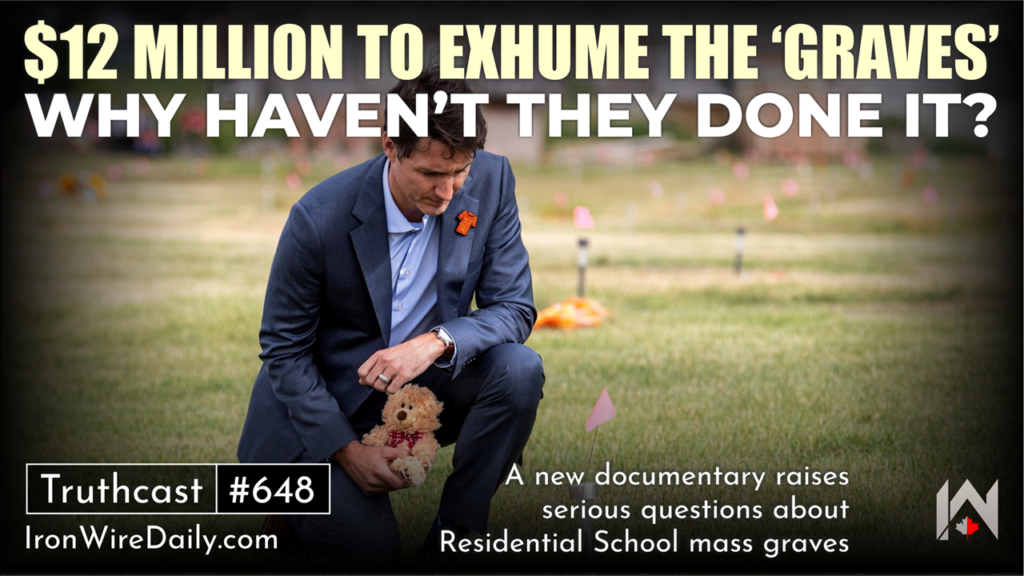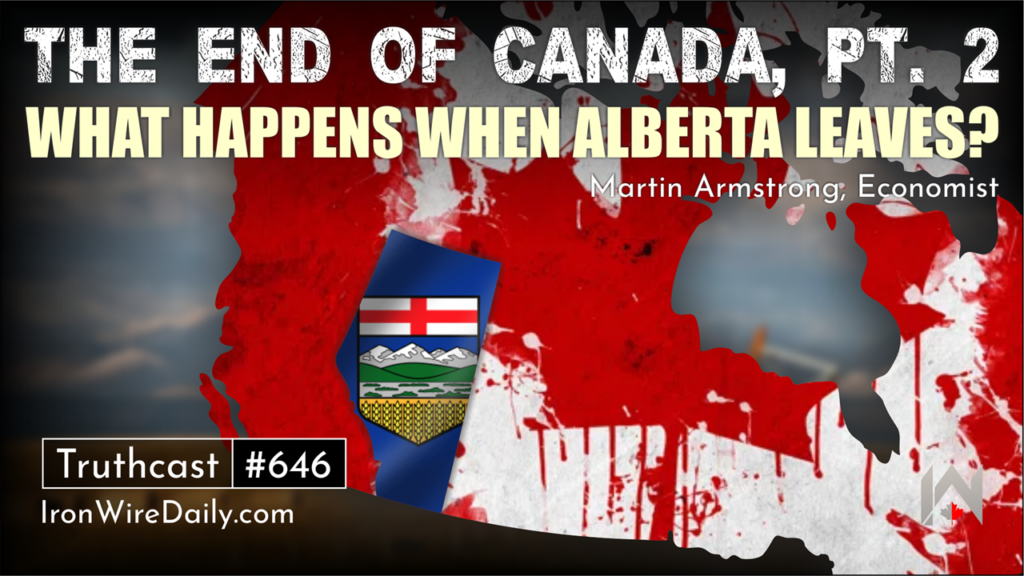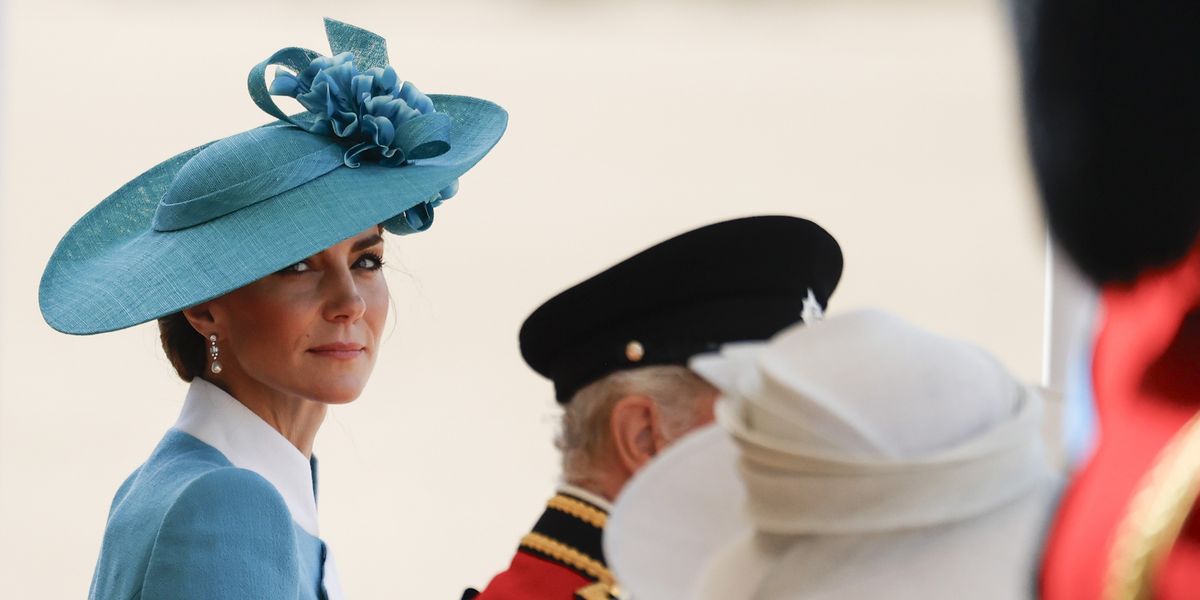The War in Ukraine Has Shattered the West’s Digital-Age Delusions

For all the breathless commentary, one awkward truth has loitered beneath the surface of the Russia-Ukraine war, which is that most people beyond the immediate theatre of conflict don’t have any clear sense of what’s happening on the ground. The fog of war has been thickened not only by competing narratives along with fragmentary info-snacking YouTube clips of drone strikes, but by something more persistent — Western wishful thinking.
For nearly three years, a chorus of commentary penned by pundits whose proximity to the war — geographically or intellectually — is open to question have served up a diet long on optimism but short on evidence. A rotating cast of Atlanticists from Anne Applebaum to Timothy Snyder, along with just about every op-ed in the Daily Telegraph, have reliably assured readers that Ukrainian victory is in sight, or that Putin’s regime has been humiliated or teeters on the edge of collapse. These forecasts, rarely tethered to battlefield realities, have functioned less as analysis and more as morale management — designed to reassure rather than inform.
This faith-based commentary sits uneasily alongside the equally confident illusions that once animated post-Cold War Western military thinking. Western politicians and strategists imagined war in the digital age would be light, precise and swift — waged by lean expeditionary forces wielding smart weapons and networked command systems. The result, they hoped, would be relatively bloodless victories achieved from a polite distance, preferably before lunchtime.
Instead, they got Bakhmut.
As this short essay will seek to disclose, the war in Ukraine has shattered a generation of digital-age delusions. It has exposed the brittle realities beneath Western military thinking and underscored the extent to which the strategic balance has shifted—less due to enemy cunning than to Western self-delusion.
The End of History did not arrive. The Return of Artillery did.
The Digital Mirage
In short, digitalisation — once regarded as the West’s ultimate strategic advantage — has failed to deliver the political returns its proponents anticipated. The concept was deceptively simple: combine precision weaponry with real-time data and operational mobility to achieve swift, efficient and low-cost victories. In the words of one tract in the mid-1990s, the aim is to apply massive shock with minimal force, such that the enemy is stunned into compliance.
Yet war, as the Prussian philosopher of war Carl von Clausewitz long ago observed, remains a clash of wills — reciprocal, unpredictable and fundamentally political. It is not a frictionless exercise in systems management, nor a technological showcase. It is organised violence pursued for political ends. Always messy and brutal. And always resistant to tidy solutions.
What Western strategists often overlooked was a basic fact: adversaries adapt. And many of them have invested not in apps or digital platforms, but in mass, resilience and industrial depth.
The assumption that digital superiority would render conventional war obsolete, where the future of war belongs not to mass armies and tanks, but to decentralised networks and precision strikes’, has not merely proven false — it has been inverted. Russia and other actors have appropriated these same tools, stripped them of their idealistic framing and employed them pragmatically — effectively, economically and at scale.
The West, by contrast, became increasingly enamoured with the imagined virtues of the digital society: a realm where information moves at light speed and liberal pieties hitch a ride on the algorithm. Nowhere was this more evident than in the enthusiasm for cyberwarfare — an area long hyped, but whose strategic effects have often fallen short. Figures such as then-Prime Minister Boris Johnson notably proclaimed that such high tech was transforming the nature of conflict.
The practical outcome of actual warfare, however, has not been the digitalisation or dematerialisation of war, but rather its real-time mediation — live streamed, framed and packaged for distant audiences. In a hyper-connected world, conflict is increasingly staged for global spectatorship. But if the medium has changed, the consequences have not: war remains bloody, destructive and — for all the intrusion of high-tech drones and AI onto the battlefield — still deeply human. “Technology may change how we kill, but not why we kill or what killing does to us.”
The Return of Walls: Fortresses in the Age of Fibre Optics
We should recall the broader intellectual mirage in which Western military thinking once basked—a time of post-Cold War euphoria when history had allegedly ended and borders were passé. Remember when Francis Fukuyama serenely informed us that ideological conflict was over? When Zygmunt Bauman waxed lyrical about ‘liquid modernity’, Michael Mandelbaum speculated about the obsolescence of major wars and Kenichi Ohmae proclaimed the borderless world, flattened by markets and lubricated by technology?
Yes, well: these ideas have not aged like fine wine.
Far from dismantling fences and ushering in a frictionless utopia, the digital age has made fortification fashionable again. Border walls, missile shields and fortified strongholds are proliferating. Bunkers are booming — economically, if not always structurally.
And on the battlefield — from Gaza to Donbas — it isn’t data packets, viral hashtags, networks or narratives that are seizing territory. It’s bulldozers, concrete and men in trenches or ankle-deep artillery shell casings.
The war of the future, we were told, would be weightless, networked, almost antiseptic. While it is true that drone warfare has made a dramatic appearance as highly advanced form of surveillance and precision guided artillery, these new technologies have serviced very traditional modes of warfare. Instead of some new conception of war in the digital age, what we got instead was a flashback: steel, trenches and the long, grinding calculus of attrition.
War hasn’t dematerialised. It has reindustrialised — only now with high-definition targeting and better graphic design.
Ukraine: A Cautionary Tale in Three Acts and No Exit Plan
The Ukraine conflict was supposed to be a masterclass in Western strategic superiority — a proxy war in which Ukraine would draw upon NATO’s high-end technology, soft power, economic leverage and moral confidence to reduce Russia’s ambitions to rubble. Instead, it’s begun to resemble a doomed product launch — overpromised, underdelivered and still limping along on the exhaust fumes of its own marketing, too costly to cancel outright and too awkward to acknowledge as a failure.
Let’s count the miscalculations:
- Soft Power: Meant to win hearts and minds. But hearts, as it turns out, aren’t for sale — and minds are busy doomscrolling through drone footage on TikTok, or more often tuning out altogether. Influence, it seems, doesn’t flow so easily from Pride-flag waving embassies and finger-wagging hashtags.
- Economic Warfare: The so-called ‘sanctions from hell’ were supposed to crush the Russian economy in record time. Instead, Russia’s GDP has outpaced much of the Eurozone, while Germany’s once-vaunted industrial base has gone into self-induced hibernation — collateral damage in a moral crusade that forgot to run the numbers.
- Strategic Credibility: Once burnished by Cold War mystique, NATO’s reputation now wobbles somewhere between ceremonial relic and crisis PR firm. The alliance increasingly resembles a séance for departed strategic purpose — hands clasped around the table, muttering slogans, hoping the ghost of 1991 will manifest and tell them what to do. It lurches between virtue-signalling and threat inflation, unsure whether it’s meant to deter adversaries or simply reassure itself that it still matters.
The unspoken truth in all this is bleak but not especially complicated: strategically, Ukraine has already lost. So too — albeit less dramatically and more expensively — has Europe. And for anyone paying attention, this wasn’t an unpredictable ending. It was the opening scene, played out exactly as the script always hinted it would. Viewed alongside the other glittering triumphs of Western statecraft — Afghanistan, Iraq, Somalia, Libya, Syria — it raises the uncomfortable question: why does strategic failure keep happening and who keeps hiring these people? At this point, a moderately alert housecat could have produced a more coherent grand strategy — if only by knocking the relevant documents off the table before they reached Cabinet.
BRICS and Mortar: Realignments in a Shattered Order
One of the most egregious strategic miscalculations — and one that yet again should have been foreseen by anyone not still mainlining end-of-history optimism — was the West’s attempt to isolate Russia. In practice, this bold stand for ‘rules-based order’ only served to hasten the very multipolarity it once dismissed as a paranoid fantasy. China and Russia are now closer than at any point since the Brezhnev era. BRICS, once dismissed as a loose acronym in search of a purpose, is gaining unexpected traction — with countries like Turkey and Indonesia now eyeing membership as a potentially better seat at the global table. De-dollarisation, once confined to fringe economists and survivalist blogs, is edging into the mainstream.
Meanwhile, the West’s effort to turn the ruble into rubble instead left it suspiciously intact — at times more stable than a few G7 currencies. Meanwhile, the grand strategy to ‘cancel’ Russia economically has largely backfired, inflicting more damage on Western industry than even the most vodka-marinated of Kremlin plotters might have dared to dream. German manufacturing sends its regards — from behind a padlocked factory gate.
Geopolitically, the unintended consequence is a slowly forming Eurasian compact: one increasingly convinced that the West — at least in its EU-NATO incarnation — is decadent, distracted and no longer capable of setting the global agenda. It’s not quite the overturning of the world order, but it’s one where states feel they have greater options than merely to choose between Western modernity and pariahdom. One thing is for certain, it is not the world order that Washington or Brussels believe they are still running.
Mass Isn’t Dead. It Just Moved East
For years, Western military doctrine enshrined speed, agility and precision as the hallmarks of modern war. Mass, by contrast, was treated as a dusty artefact — something best left in museums next to the flintlock and the bayonet. According to one set of commentators: “Mass is no longer a requirement for victory. Information superiority and speed of command will displace attritional warfare.” Large-scale mobilisation, in other words, was seen as a clunky relic of industrial wars: too slow, too costly, and too reminiscent of the bad old days when wars actually lasted longer than a news cycle.
Then came Ukraine. And Gaza. And with them, the blunt truth reasserted itself: mass matters. Industrial capacity — measured not in white papers but in shells, drones and replacement parts — still wins wars.
The hard numbers from Ukraine are telling:
- Russia is producing artillery shells at a ratio of roughly 3:1 over the combined output of the West.
- It manufactures more armoured vehicles, drones and missiles than all of NATO put together.
- It’s done all this without running up colossal debts or collapsing its domestic economy — relying instead on retrofitted Soviet factories and a grimly effective wartime mobilisation.
By contrast, the West struggles to supply even its own forces — let alone those of its Ukrainian proxy. The US production rate of SM-3 interceptor missiles, for example, is a grand total of 12 per year. That’s not a misprint. It’s barely enough to protect a single aircraft carrier, let alone a continent.
What we’re witnessing is not just a clash between Russia and Ukraine. It’s a collision between two theories of war: the Western model of information-age finesse, and the industrial-age brute force its strategists once declared obsolete. The former looks increasingly like a TED Talk. The latter, like it’s winning.
Manoeuvre vs Attrition: When Theory Meets Mud
Western military theory has long exalted manoeuvre warfare — rapid, fluid operations designed to outpace the enemy, strike weak points and collapse morale before a proper defence can even form. It’s a vision of war as ballet: swift and elegant, and preferably done by last orders at the wine bar. Attrition, by contrast, is treated as a kind of doctrinal embarrassment — too crude, too slow, too First World War.
But the battlefield, tells a different story.
Ukraine’s much-vaunted counter-offensives have bogged down in kilometre-deep minefields and trench networks that look like they were lifted from 1916. Russia’s static defences — dismissed early on as archaic — have proven not only resilient but maddeningly effective. Gaza, too, offers little comfort to the manoeuvrists: less lightning war, more bloodied crawl.
The promised revolution in precision warfare — guided missiles, smart bombs and real-time targeting — hasn’t rewritten the rules so much as underlined the old ones. ‘Smart’ weapons may hit what they aim at, but they don’t change the fact that the other side is still dug in, still shooting back, and often still there after the smoke clears.
What has emerged isn’t the war of tomorrow, but the war we thought we had left behind — less networked lethality and more Verdun with drones. And despite the glossy brochures, war, it turns out, still favours the side that can take a punch, not just throw one.
Operational Tempo: Fast, Dumb and Going Nowhere
Speed, we were assured, kills the enemy. Victory belongs to the swift. Wars must be fought fast, finished faster and ideally wrapped up in time for the next election cycle. The longer they drag on, the more politically toxic and strategically incoherent they become. But once again, theory has collided with reality — and reality, as usual, has no interest in being tidy, televised or tactically convenient.
From Iraq to Afghanistan to Ukraine, the West’s ‘fast’ wars have displayed an unfortunate tendency to turn into drawn-out strategic purgatories. Initial momentum gives way to mission creep, political drift and tactical improvisation dressed up as doctrine. Tempo without purpose quickly devolves into noise. Being able to react faster doesn’t help much if you have no idea what you’re reacting to — or why.
What we’re left with is movement masquerading as progress. Digital velocity, for all its dashboards and situational awareness apps, is no match for old-fashioned things like strategic patience, industrial resilience or political staying power. The West has become excellent at starting wars quickly. It has rather less to show when it comes to finishing them.
Information Wars and the Hollow Victory
Few phrases have received more adoration in recent years than ‘information war’: the idea of gaining advantage by protecting access to information flows, while destroying and disrupting those of the adversary. Think tanks, officials and consultants alike have extolled the virtues of strategic communications, narrative shaping and viral content as if policy papers and social media posting could substitute for tanks.
Ukraine, by almost every Western measure, has won the information war hands-down: cinematic footage, clever memes and Zelensky’s branded defiance — all flawlessly packaged for global consumption. Most recently, this spectacle was crowned in early June by the daring drone strike against Russia’s strategic bomber fleet deep inside its own territory.
Launched from modified civilian lorry containers, the operation thrilled the op-ed writers but carried rather less charm for anyone concerned with nuclear stability, risking as it does, the Strategic Arms Limitation Treaty and practically inviting Russian reprisals against Western targets. One can only hope Moscow — or any other future adversary — isn’t tempted to return the favour in kind. After all, there is a certain irony in Western commentators applauding such actions as bold and justified while assuming, quite serenely, that their own military bases will be sacrosanct.
But the point is though, that none of this moves the needle in Ukraine’s favour. It is Russia that occupies territory, fires more shells and steadily dictates the tempo of the war.
The paradox is hard to ignore: while Western commentators celebrated Kyiv’s narrative dominance and drone-delivered showmanship, Moscow focused on artillery. One side perfected the aesthetics of resistance; the other brought bulldozers and blasting tactics. It turns out that shaping perceptions doesn’t stop projectiles — and that going viral is no defence against shrapnel.
Winning the narrative, in other words, is not the same as winning the war. It may not even be relevant once the shells start falling.
The West’s Strategic Malaise: ‘Something Must Be Doneism’
Since the Cold War, Western wars have rarely been existential. They’ve been gestures — emotional reactions to tragedy, terrorism or televised horror. The political logic has been consistent, if not exactly strategic: be seen to act. It’s foreign policy as theatre — enough engagement to look principled, but not enough to get seriously hurt or to seriously imperil the national homeland.
The results speak for themselves. Libya, Syria, Afghanistan, Iraq — all launched with moral fanfare and media buzz, all ending in fatigue, withdrawal or the polite burying of lessons left unlearned.
Ukraine, however, is different. The stakes are higher. The adversary is stronger. And yet the habits remain the same. The West’s response has been a familiar mix: morally emphatic, logistically improvisational and industrially unsustainable. It’s as if NATO is attempting to wage a 20th-century land war on 21st-century terms — with 1990s stockpiles and attention spans measured in quarterly press briefings rather than prolonged campaigns.
In truth, many of these interventions seem designed less for the battlefield than for the curated stage of liberal respectability — crafted to win plaudits in opinion pages, panel discussions and policy forums where moral posturing always trumps material constraint. They are calibrated for the approval of the right-thinking, not the requirements of strategic success. Here, victory is optional, while virtue-signalling is mandatory.
Conclusion: Welcome to the Post-Post-Cold War
We were told the digital age would flatten borders, replace firepower with fibre optics and swap armies for narratives. Instead, we got trenches, mass mobilisation and a resurgent Eurasian bloc. It’s not quite the holographic future imagined by the PowerPoint prophets.
The West’s military models aren’t failing for lack of virtue, but because they’re built on expired assumptions. The future didn’t arrive on schedule — and the past, rather rudely, refused to stay buried.
What lessons emerge?
- Industrial capacity matters: You can’t tweet your way to artillery shells.
- Mass still wins wars: Precision is nice, but only if you have a lot of it.
- Soft power is not eternal: A civilisation unsure of itself can’t expect others to follow its lead.
- Digital illusions are just that: Cyberspace didn’t transcend the battlefield; it just added lag, disinformation and another excuse for inaction.
In the end, strategic success depends not on who reacts fastest or trends hardest, but on the dull, unglamorous verities that underlies modern war: production, patience and purpose.
And right now, those are in short supply west of the Dnieper.
David Betz is Professor of War in the Modern World at King’s College London. Michael Rainsborough is Professor of Strategic Theory at the Centre for Future Defence and National Security.















